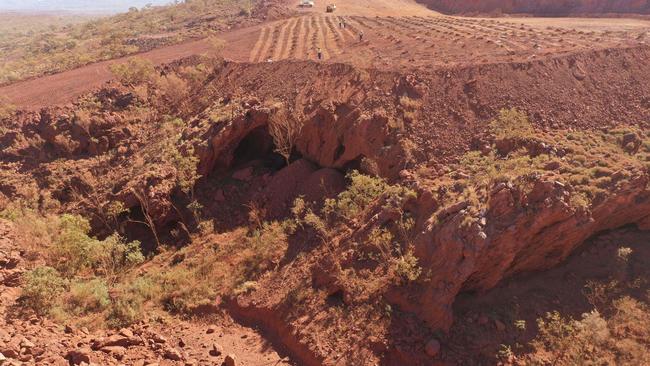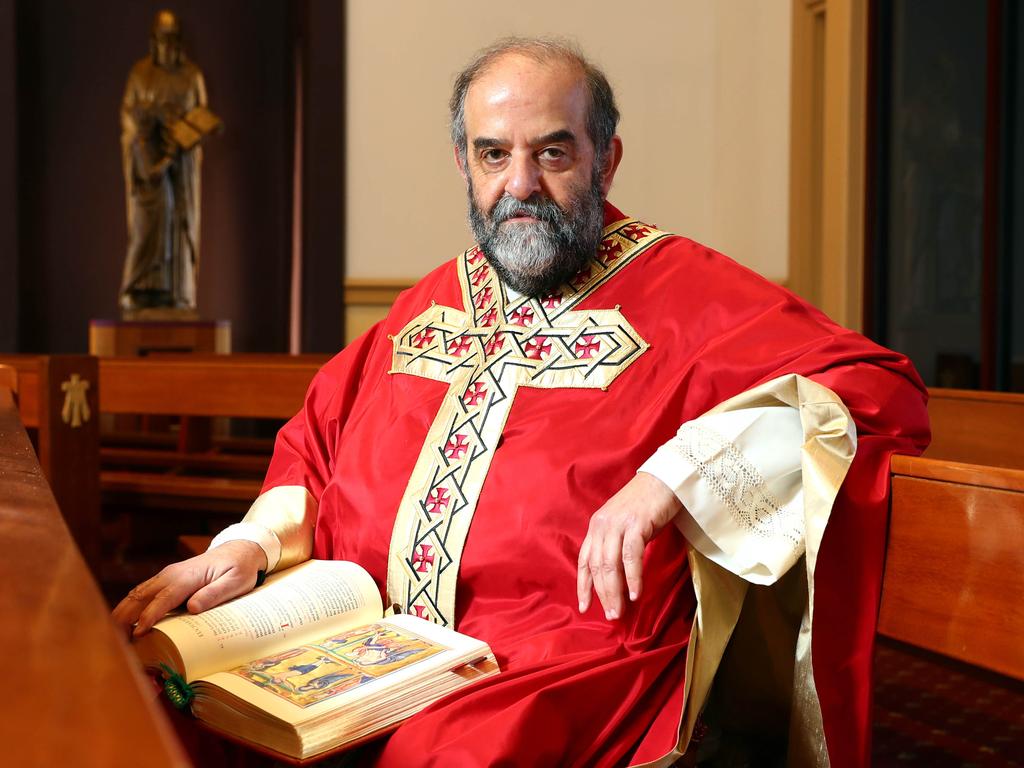Miner’s ‘crime’ just routine in Pilbara
The Juukan Gorge caves were by no means the first ancient caves of the Pilbara to be lost to mining. And they won’t be the last.

It’s an unpopular thing to say, given the near-universal condemnation of Rio Tinto over the Juukan Gorge caves, the widespread welcoming of the departure of chief executive JS Jacques and his senior executives Chris Salisbury and Simone Niven, and the fact Rio itself has apologised for its actions, but there is a strong argument to be made that the punishment meted out to the trio is disproportionate to the offence.
The Juukan Gorge caves were by no means the first ancient caves of the Pilbara to be lost to mining. And they won’t be the last.
The uncomfortable reality of the world-leading iron ore industry that sustains the economy of Western Australia and the nation is that it will inevitably impact on sites of archaeological and cultural significance.
The ancient Pilbara landscape is rich in both culture and minerals.
It is up to the government to set the terms of how the impact of the latter on the former are managed, and it was with those government rules that Rio Tinto fully complied when it secured approval to blow up Juukan Gorge.
For many, particularly those in the major cities, the destruction of the caves was jolting and disturbing.
But such destruction happens routinely, legally, and with the knowledge and almost always the consent of traditional owners, month after month in the Pilbara.
Rio Tinto had the legal authority to do what it did, albeit under laws that are outdated and in desperate need of modernising to meet community standards.
The company had engaged with the traditional owners of the caves, the Puutu Kunti Kurrama and Pinikura people, ahead of launching its application under WA’s Section 18 process back in 2013.
Documents obtained by The Australian on Thursday under Freedom of Information confirmed that Rio Tinto and the PKKP had described the significance of the caves as “high” in the miner’s application for its approvals.
While much has been made of the discovery of artefacts at the caves in 2014, after the Section 18 approval was granted, the documents show that the historical significance of the caves and their potential to deliver further, older artefacts was already understood and was made clear in the 2013 application.
Rio Tinto had funded archaeological digs at the caves ahead of the application, recovering hundreds of artefacts in the process.

The PKKP made it clear at the time of that application that they wanted artefacts salvaged and stored ahead of the caves’ destruction, something that Rio Tinto later did.
Some of the more melodramatic commentary about the Juukan Gorge debacle has compared the caves to the pyramids of Egypt and the Buddhas of Bamyan.
The artefacts recovered from the caves were certainly archaeologically significant and absolutely worthy of recovery and study.
But what exactly were they? According to the Section 18 application, the artefacts recovered were stone flakes, animal bone fragments, and charcoal.
The Section 18 documents also highlight just how many rock-shelters and sites there are, both in the immediate area of Juukan Gorge and across the Pilbara more generally.
Rio Tinto had years earlier already secured Section 18 approval to destroy three modified trees, 11 rock-shelters and 20 artefact scatters to make way for the main Brockman mine near Juukan Gorge.
Within 30km of the Juukan Gorge rock-shelters, according to the 2013 Section 18 application, there were 330 Aboriginal heritage places including another 115 rock-shelters, albeit the two Juukan Gorge caves had already been identified at that time as “distinctly unique for the area” given their archaeological potential.
A summary prepared by the Department of Indigenous Affairs as part of the Section 18 assessment noted there was “no specific ethnographic historical knowledge” pertaining to the Juukan area, with the one exception of one PKKP woman who said a forebear had been born in the area.
Rio Tinto was fully compliant with the law and the established procedures followed by it and every other miner at the time. The PKKP also stood to collect $4.7m in payments from Rio for the 8.1 million tonnes of ore that would be mined from the caves, although mining has been paused in the area since the May detonation.
Where Rio did clearly stuff up was in its at times tone-deaf and ham-fisted response to the public outcry.
That it got its response so wrong can partially be explained by the fact that what it had done was so common that it totally misread just how far community expectations had evolved relative to the established laws and procedures.
The missteps in its response, when it had long been apparent that a senior scalp was expected, meant the bloodletting had to go deeper when the board finally decided to act.






To join the conversation, please log in. Don't have an account? Register
Join the conversation, you are commenting as Logout